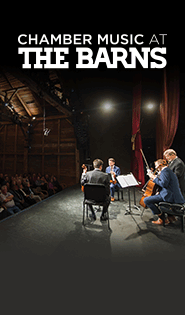Adams’ sprawling “Gospel” proves a misfire for Noseda, NSO

Gianandrea Noseda conducted the National Symphony Orchestra in John Adams’ “The Gospel According to the Other Mary” Thursday night at the Kennedy Center.
There were many reasons for disappointment in Thursday night’s concert by the National Symphony Orchestra, which offered the first local performance of John Adams’s massive 2014 oratorio The Gospel According to the Other Mary. This heartfelt, deeply serious work by one of America’s most honored and successful composers drew a thin crowd, which thinned out still more after intermission.
The cost/benefit of these performances will also be sobering. Against the expense of hiring a choir and six soloists, renting exotic instruments and sound equipment, bringing in extra players, flying the composer out to take bows, and printing a program book solely for these concerts, the NSO will only earn revenue from one additional performance, as it has begun scrapping its regular Friday night subscription concerts in favor of other types of services.
And yet, they didn’t spend enough. An oratorio is akin to an opera in that it delivers a narrative, with various characters, via large amounts of text (The Gospel was written to be either staged or presented in concert as here). Thus it is crucial that the audience is able to follow the words. The Kennedy Center provided neither projected surtitles nor even adequate lighting in the hall to read the small print in the programs,
Most problematic, the performance itself was an often frantic and chaotic affair, the string players visibly struggling in the hardest spots. Everyone had their heads buried in the score, not least conductor Gianandrea Noseda, who only looked up to toss out last-second cues. The rendition was at least one rehearsal short of where it should have been, further hobbling what should have been one of the signal events of this season.
Adams is a highly-sophisticated artist whose collaborations with Alice Goodman, Mark Morris, and others, have yielded some of the most important operas and concert works of our time. He has had a particularly long relationship with Peter Sellars, who did much of the work on the libretto here.
This Passion play blends familiar texts from scripture with works of diverse 20th-century poets, linking the last days of Jesus with contemporary scenes and events such as a jailed woman going through drug withdrawal and the mass arrests of migrant farm workers. Intense stuff, with intense music to go along with it.
Unfortunately, Adams could have used a dispassionate editor. The Gospel is a perfect example of a possibly great piece that was allowed to sprawl into gallimaufry simply because there was no one with a red pen. Scene after scene contains musical ideas that pop and sparkle, only to run on and eventually tire the ear. The creepy, caliginous entr’acte music for the crucifixion itself was marvelous, but by the time the singing finally started one felt “Enough already!” The tenor aria that closes the first act, while dramatically static, offered some of the most cogent, satisfying music of the evening, redolent of Ives and Mahler.
Adams’s music has taken on layers of dissonance and complexity that his more popular early works – Shaker Loops or Harmonium – lacked, but his meaning behind it all is hard to grasp at times. Why is there Japanese taiko drumming when the police come to arrest followers of Cesar Chavez? What on earth is a cimbalom – a hammer dulcimer exclusive to ethnic Hungarian music – doing here?
To be sure, there were several charming moments, among them “For the earth shall be full” for three countertenors, and the spring chorus in the last scene. Mary’s lament at the crucifixion, “When the rain began to fall,” was truly visceral and haunting, two oboes intertwining in anguish over skittering, gasping strings; but again, it went on several minutes too long.
The University of Maryland Concert Choir did yeoman work, though, like the NSO, not everything was in place. The solo singers – a curiously bunched-up tessitura of tenor, three countertenors, and two mezzos – were all excellent. Tamara Mumford’s vocalism in the part of Mary’s sister Martha was consistently impressive and pleasing.
Let’s hope that this misfire doesn’t cause the Kennedy Center to stop taking risks or programming important contemporary music.
The program will be repeated 8 p.m. Saturday. kennedy-center.org; 202-467-4600.
Robert Battey has served on the music faculties of the State University of New York, the University of Missouri, and the Levine School. He is music director of the Gettysburg Chamber Music Workshop, a faculty member at Cellospeak, and has appeared as soloist with numerous DC-area orchestras. He has written extensively for the Washington Post and for STRINGS magazine.







Posted Mar 09, 2018 at 7:40 pm by Saul Lilienstein
This is a well-written review, clearly by one who is also a musician. However he is wrong in stating that the cimbalon is ‘exclusive to ethnic Hungarian music. Check it out; that instrument is found all over eastern Europe.
Posted Mar 10, 2018 at 1:00 pm by Laura Youens
Oh dear. I’m going to hear this tonight. I can think of a number of contemporary pieces that could have benefited from red-pencil excisions!